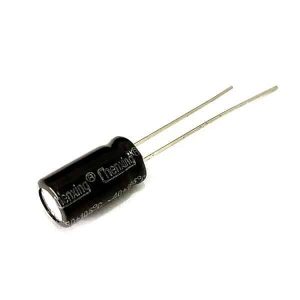Capacitors are fundamental components in electrical circuits, playing a crucial role in storing and releasing electrical energy. Understanding what happens to a capacitor in a circuit is essential for engineers, technicians, and enthusiasts alike. In this blog post, we will delve into the intricate functions of capacitors, exploring their behavior, applications, and the impact they have on circuit performance.
- Capacitor Basics:
To comprehend the behavior of capacitors in a circuit, we must first grasp their fundamental characteristics. A capacitor consists of two conductive plates separated by a dielectric material. When a voltage is applied across the plates, an electric field is established, causing the accumulation of charge on each plate. This stored charge enables capacitors to store and release electrical energy. - Charging and Discharging:
When a capacitor is connected to a power source, such as a battery, it undergoes a process called charging. During charging, the capacitor gradually accumulates charge until it reaches its maximum capacity, known as the fully charged state. Conversely, when the power source is disconnected, the capacitor discharges its stored energy. This discharge process occurs gradually, releasing the accumulated charge until the capacitor becomes fully discharged. - Time Constants and Capacitor Behavior:
The behavior of capacitors in circuits is influenced by their time constants, which depend on the capacitance value and the resistance in the circuit. The time constant determines the rate at which a capacitor charges or discharges. A larger capacitance or lower resistance results in a longer time constant, leading to slower charging or discharging. Conversely, a smaller capacitance or higher resistance yields a shorter time constant, causing faster charge transfer. - Filtering and Smoothing:
Capacitors find extensive use in filtering and smoothing applications. In power supply circuits, capacitors are employed to filter out unwanted noise and ripple voltage, ensuring a stable and clean DC output. Additionally, capacitors smooth out abrupt changes in voltage, providing a more constant and regulated supply to sensitive components. - Energy Storage and Power Delivery:
Capacitors act as energy reservoirs in circuits, storing electrical energy during charging and releasing it when needed. This property makes capacitors vital in applications requiring short bursts of high power, such as camera flashes or motor starting circuits. By rapidly discharging their stored energy, capacitors deliver a surge of power, compensating for the limitations of the power source. - Frequency-Dependent Behavior:
Capacitors exhibit frequency-dependent behavior, making them essential in frequency-selective circuits. In AC circuits, capacitors allow the flow of alternating current while blocking direct current. This property enables capacitors to act as frequency-dependent filters, passing certain frequencies while attenuating others. Such applications are prevalent in audio systems, where capacitors are used to separate bass, midrange, and treble frequencies.
Conclusion:
Capacitors play a multifaceted role in electrical circuits, contributing to energy storage, power delivery, filtering, and frequency-selective functions. Understanding the behavior of capacitors and their applications is crucial for designing efficient and reliable circuits. By harnessing the power of capacitors, engineers can optimize circuit performance and ensure the smooth operation of various electronic devices.



+ There are no comments
Add yours